
MULTIBODY SYSTEM DYNAMICS
Scope & Guideline
Advancing the Frontiers of Multibody Dynamics
Introduction
Aims and Scopes
- Development of Multibody Dynamics Models:
The journal emphasizes the creation of robust models for simulating the behavior of multibody systems, including flexible and rigid bodies, and their interactions under various conditions. - Control and Optimization of Mechanical Systems:
A significant focus is placed on control strategies and optimization techniques for improving the performance and efficiency of mechanical systems, particularly in robotics and vehicle dynamics. - Application of Advanced Computational Techniques:
Utilization of cutting-edge computational methods such as machine learning, data-driven approaches, and advanced numerical techniques to enhance the accuracy and efficiency of multibody simulations. - Analysis of Human and Biomechanical Systems:
Research on biomechanics, including human motion analysis and the design of assistive devices like exoskeletons, is a prominent area, reflecting the journal's commitment to interdisciplinary applications. - Investigation of Contact Mechanics and Friction:
The journal covers studies related to the complex interactions of contact mechanics, friction, and their implications in various mechanical systems, enhancing the understanding of real-world applications.
Trending and Emerging
- Data-Driven and Machine Learning Approaches:
There is a marked increase in the use of data-driven techniques and machine learning methodologies for system identification, control, and optimization, reflecting a broader trend in engineering and robotics. - Integration of Biomechanics and Robotics:
The intersection of biomechanics with robotics is becoming more prominent, with a focus on human-inspired designs and assistive technologies, showcasing an increased interest in practical applications that enhance human capabilities. - Advanced Simulation Techniques:
Emerging themes include advanced simulation techniques, such as real-time simulations and co-simulation methods, which are critical for the development of complex systems in dynamic environments. - Sustainability and Efficiency in Design:
Research focused on optimizing designs for energy efficiency and sustainability, particularly in vehicle dynamics and robotic systems, indicates a growing awareness of environmental considerations in engineering. - Nonlinear Dynamics and Complex Interactions:
There is a rising trend in exploring nonlinear dynamics and complex interactions within multibody systems, which is crucial for understanding real-world phenomena and improving simulation fidelity.
Declining or Waning
- Traditional Rigid Body Dynamics:
There has been a noticeable decrease in papers focusing solely on traditional rigid body dynamics without considering flexibility or complex interactions, as newer methodologies that incorporate these aspects gain traction. - Basic Theoretical Frameworks:
The emphasis on purely theoretical explorations of multibody dynamics without experimental validation or application has diminished, as researchers increasingly seek practical implications and real-world applications. - Static Analysis of Mechanical Systems:
Research centered on static analysis, especially in simple mechanical systems, has seen reduced attention, likely due to the growing interest in dynamic and time-dependent behaviors.
Similar Journals
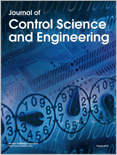
Journal of Control Science and Engineering
Advancing the Frontiers of Control Science and EngineeringThe Journal of Control Science and Engineering, published by HINDAWI LTD, is a prominent open-access journal that has been disseminating pioneering research since 2007. With its ISSN 1687-5249 and E-ISSN 1687-5257, the journal serves as a crucial platform for researchers, professionals, and students engaged in the fields of Computer Science Applications, Electrical and Electronic Engineering, and Modeling and Simulation. Holding a Q3 quartile ranking in 2023 across these categories, the journal maintains rigorous academic standards and is recognized for its contributions to advancing knowledge and technology in control science. The journal's current Scopus rankings highlight its significance, with impressive percentiles placing it within the top tier of its fields. Readers can access a wide range of high-quality research articles through its open access model, further establishing the journal as an essential resource for anyone seeking to broaden their understanding and application of control principles.
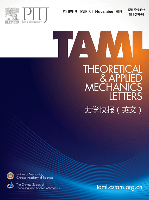
Theoretical and Applied Mechanics Letters
Exploring Cutting-Edge Solutions in Engineering DisciplinesTheoretical and Applied Mechanics Letters, published by ELSEVIER, stands as a premier journal in the field of engineering and applied mechanics, recognized for its rigorous peer-reviewed articles that advance theoretical and practical frameworks. With an impressive open access policy established in 2015, the journal enhances global accessibility to cutting-edge research across a range of disciplines including Aerospace, Civil, Mechanical, and Biomedical Engineering, along with Computational Mechanics and Ocean Engineering. The journal boasts an enviable position in the academic landscape, achieving a Q1 rank in several categories as of 2023, while being cited among the top percentiles in Scopus Ranks, specifically ranking #25 in Aerospace Engineering and #15 in Computational Mechanics. The journal aims to foster innovation by providing a platform for scholars and professionals to disseminate their findings, thereby bridging the gap between theoretical research and practical applications. By promoting a diverse range of topics and methodologies, Theoretical and Applied Mechanics Letters not only contributes to the advancement of engineering disciplines but also supports the global academic community in exploring sustainable and impactful engineering solutions.
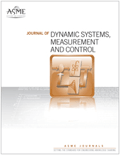
JOURNAL OF DYNAMIC SYSTEMS MEASUREMENT AND CONTROL-TRANSACTIONS OF THE ASME
Empowering innovation through rigorous research in measurement and control.JOURNAL OF DYNAMIC SYSTEMS MEASUREMENT AND CONTROL - TRANSACTIONS OF THE ASME is a renowned periodical published by the American Society of Mechanical Engineers (ASME), focused on advancing the field of dynamic systems, measurement, and control. With a rich publication history spanning from 1971 to 2025, this journal serves as a pivotal platform for disseminating high-quality research aimed at enhancing understanding and innovation in various sectors, including mechanical engineering, control and systems engineering, and information systems. The journal currently holds a respectable Q2 category ranking in multiple fields, reflecting its commitment to excellence and rigorous peer-review standards. Although it does not offer open access, its extensive reach within the academic community exemplifies its significance, making it an indispensable resource for researchers, professionals, and students eager to engage with cutting-edge advancements. For those seeking to expand their knowledge and contribute to the dialogue surrounding dynamic systems and control mechanisms, JOURNAL OF DYNAMIC SYSTEMS MEASUREMENT AND CONTROL stands out as a critical reference.

Frontiers in Mechanical Engineering-Switzerland
Unleashing Potential Through Open Access ResearchFrontiers in Mechanical Engineering-Switzerland, published by FRONTIERS MEDIA SA, is a pioneering open-access journal that has been fostering innovations in the field of mechanical engineering since its inception in 2015. Based in Switzerland, this journal provides a robust platform for disseminating cutting-edge research across multiple disciplines within mechanical engineering, including materials science, industrial and manufacturing engineering, and computer science applications. With impressive Scopus rankings, including Q2 statuses in key categories such as Industrial and Manufacturing Engineering and Mechanical Engineering, it stands out as a valuable resource for researchers and practitioners aiming to stay abreast of trends and breakthroughs in these fields. By embracing open-access principles, the journal ensures that high-quality research is readily available to a global audience, thereby promoting collaboration and knowledge sharing. As it continues to grow, Frontiers in Mechanical Engineering is poised to make significant contributions to both academic and professional communities, enhancing understanding and advancing practices in engineering disciplines.

Archive of Mechanical Engineering
Unlocking the Future of Mechanical EngineeringThe Archive of Mechanical Engineering, published by Polska Akademia Nauk (Polish Academy of Sciences), is a distinguished platform for disseminating cutting-edge research in the fields of Mechanical Engineering and Mechanics of Materials. Since its inception, the journal has evolved and embraced an Open Access model since 2010, thereby enhancing accessibility and fostering wider dissemination of knowledge among researchers, professionals, and students globally. The journal covers a broad spectrum of topics, ensuring that vital advancements in mechanical engineering are communicated effectively. Recognized as a Q3 category journal in both its relevant categories as of 2023, the Archive continues to establish itself with a competitive Scopus Rank, aiming to elevate the standard of research and innovation. By merging historical insights with contemporary advancements, the journal serves as an essential resource for those seeking to delve into the evolution and future of mechanical engineering.
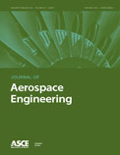
JOURNAL OF AEROSPACE ENGINEERING
Charting new territories in aerospace research and practice.JOURNAL OF AEROSPACE ENGINEERING, published by the American Society of Civil Engineers (ASCE), is a premier scholarly journal that serves as an essential resource for engineers and researchers in the aerospace engineering domain. With an ISSN of 0893-1321 and an E-ISSN of 1943-5525, this journal has been dedicated to advancing knowledge since its inception in 1988 and will continue to do so through to 2024. The journal is categorized in the Q2 quartile across multiple engineering disciplines, including Aerospace Engineering, Civil and Structural Engineering, Materials Science, and Mechanical Engineering, reflecting its reputable standing in the community. The impact factor speaks to its influence and relevance, making it a critical reference for ongoing research and innovations. Although this journal does not offer open access, it ensures that its content is comprehensive, engaging, and peer-reviewed, targeting a diverse audience of professionals, academics, and students involved in the fields of aerospace engineering and related disciplines. The journal actively contributes to shaping future engineering practices, showcasing cutting-edge research and fostering collaboration among discipline experts.

NONLINEAR DYNAMICS
Innovating Solutions Through Nonlinear DynamicsNONLINEAR DYNAMICS is an esteemed academic journal published by SPRINGER, focusing on a diverse range of topics within the fields of Aerospace Engineering, Applied Mathematics, Control and Systems Engineering, Electrical and Electronic Engineering, Mechanical Engineering, and Ocean Engineering. Since its inception in 1990, this journal has become a premier platform for disseminating cutting-edge research and innovative methodologies from both theoretical and practical perspectives. With a high impact factor and ranked in the Q1 quartile across several engineering and mathematics categories, NONLINEAR DYNAMICS is recognized for its significant contribution to advancing knowledge and technology in nonlinear phenomena. Researchers and professionals are encouraged to engage with this journal to publish their findings and stay at the forefront of developments. Although it does not offer open access options, the journal ensures rigorous peer review, enhancing the credibility and visibility of published work.
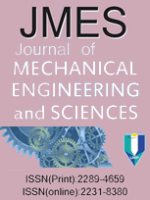
Journal of Mechanical Engineering and Sciences
Bridging Theory and Application in Engineering ExcellenceThe Journal of Mechanical Engineering and Sciences (ISSN: 2289-4659, E-ISSN: 2231-8380), published by UNIV MALAYSIA PAHANG, is a prominent open access journal established in 2011, dedicated to advancing the field of mechanical engineering and associated sciences. Covering a wide array of topics from industrial manufacturing processes to computational mechanics, the journal serves as a vital platform for researchers, professionals, and students to disseminate innovative findings and methodologies. With impressive Scopus rankings, including a place in the 60th percentile for Industrial and Manufacturing Engineering, the journal holds a significant position among its peers, facilitating global academic discourse. Located in Kuantan, Pahang, Malaysia, the journal emphasizes accessibility and collaboration within the engineering community, encouraging submissions that contribute to both theoretical and applied aspects of mechanical engineering.

Journal of Theoretical and Applied Mechanics
Connecting Researchers and Practitioners in MechanicsJournal of Theoretical and Applied Mechanics, published by the Polish Society of Theoretical and Applied Mechanics, stands as a leading platform for disseminating cutting-edge research in the realms of theoretical and applied mechanics. With its ISSN 1429-2955 and E-ISSN 1429-2955, this Open Access journal has been fostering academic dialogue since 2006, making knowledge readily accessible to researchers and practitioners alike. Based in Warsaw, Poland, the journal encompasses a wide breadth of topics within mechanics, appealing to a diverse readership including researchers, professionals, and students. The journal's current Scopus ranking places it within the 30th percentile of the field, emphasizing its relevance and contribution to the discipline. As it converges from 2007 to 2024, the Journal of Theoretical and Applied Mechanics is pivotal for those seeking to advance understanding and innovation in mechanical engineering and mathematics, making it an essential resource for anyone involved in these critical areas of study.

Advances in Mechanical Engineering
Transforming Theoretical Insights into Practical SolutionsAdvances in Mechanical Engineering is a premier open-access journal published by SAGE Publications Ltd, dedicated to the advancement of theoretical and applied research in the field of mechanical engineering. With an ISSN of 1687-8132 and an E-ISSN of 1687-8140, this journal has been a vital resource for scholars and practitioners since its inception in 2009. Housed in the United States, it operates under a commitment to ensure free and immediate access to its high-quality content, enhancing collaboration and innovation across the global engineering community. With a noteworthy Q2 ranking in the mechanical engineering category and a solid Scopus rank placing it in the 59th percentile, the journal serves as an influential platform for cutting-edge research, theoretical advancements, and comprehensive reviews. As the field evolves, Advances in Mechanical Engineering continues to cater to the rigorous needs of researchers, professionals, and students, striving to transform knowledge into tangible engineering solutions. This journal's commitment to excellence makes it a significant contributor to the mechanical engineering field, encouraging dynamic discussions and implications for the future.